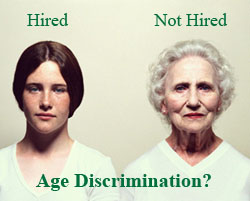What is age discrimination in the workplace?
Table of contents:
- What is age discrimination in the workplace?
- Class action age discrimination cases
- How is age discrimination proven?
- Examples of age-based employment discrimination
- Federal and State laws about age discrimination
- Types of age discrimination
- Direct age discrimination
- Indirect age discrimination
- Age discrimination lawyer
Let’s start from the top
Class Action Age Discrimination Cases
Age discrimination in the workplace is illegal. Stevens & McMillan is a leading Orange County workplace discrimination firm, having defended employees in Orange County, Los Angeles, Riverside, and San Bernardino, who have been subjected to discrimination based on protected characteristics. One form of discrimination is based on a worker’s age.
Age discrimination occurs in the workplace when employees who are 40 or older are treated unfavorably due to their age. Many workers over 40 find themselves the victims of discrimination in the workplace. If you are an employee who is over the age of 40, the law protects you from age-based employment discrimination. Sometimes age discrimination is obvious and overt, while other times it is subtle or hidden. Regardless of the forms, it takes, age discrimination is against the law.
The Equality Act 2010 says that you must not be discriminated against because:
- you are (or are not) a certain age or in a certain age group
- someone thinks you are (or are not) a specific age or age group, this is known as discrimination by perception
- you are connected to someone of a specific age or age group, this is known as discrimination by association
Discrimination is unlawful in any phase of employment including job postings, job descriptions, interviews, hiring, salaries, job assignments, merit increases, performance management and evaluation, training, disciplinary actions, promotions, demotions, benefits, employment termination, and layoffs.
How is Age Discrimination Proven?
Most employers and supervisors who engage in this kind of discrimination naturally do not admit their true reasons, and will often attempt to justify their actions by blaming non-age-related factors such as unsatisfactory employee performance, downsizing, reductions in the workforce, or company reorganization. Fortunately, even when there is no “smoking gun” evidence of discrimination, victims of discrimination can still often prove their claims through circumstantial or indirect evidence.
The following are some examples of age-based employment discrimination:
- Cutting older employees with the highest salaries before younger employees
- Pressuring an older employee to retire whether by repeatedly asking an employee, “Are you going to retire?” or “When are you going to retire?”
- Forcing an older employee to retire
- Cutting older employees with the highest salaries before younger employees
- Promoting a younger person rather than an older worker
- Making comments about wanting “fresh faces” or “youthful energy” in the office or Comments such as: “He’s not a good cultural fit for the company,” “We want a more youthful image for our company,” or “We need more young blood in the company.”
- Refusing to hire an otherwise qualified employee who appears older than a certain age
- The boss consistently socializes with younger workers gives them the best job opportunities, or otherwise displays a preference against older employees
- Not permitting and refusing to invest in an older employee to learn new skills or attend training
- Giving poor performance reviews that are undeserved and then firing the employee based on these negative evaluations
- Passing over an older worker for promotion and hiring a younger person instead
- Threatening to fire an employee if he/she does not retire
- Reassign older employees to unpleasant duties.
- Stop getting raises to older employees
- Advertising for someone to join a ‘dynamic, young team’
- Not employing mature workers because it’s assumed that they’ll soon retire
- Unlawfully restricting apprenticeship programs based on age unless they fall within specific ADEA or EEOC exemptions.
- Discrimination related to participation in federal activities and programs that receive Federal financial assistance based on age is prohibited under the Age Discrimination Act of 1975.
- Unfair discipline for older employees
In general, any action that an employer takes that adversely affects a disproportionate number of employees over 40 is also discrimination, the majority of age discrimination cases involve workers who are terminated or mistreated by a younger supervisor. However, this does not have to be the case, as company owners and supervisors who engage in discriminatory conduct can be the same age or even older than their victims.
Federal and State laws about age discrimination
Federal and California Fair Employment and Housing (DFEH) protects employees against discrimination in the workplace because of age, The Age Discrimination in Employment Act (ADEA) is a federal law that protects workers and job applicants aged 40 and over from age-based discrimination in all aspects of employment. The ADEA does not apply to elected officials, independent contractors, or military personnel. The law does apply to:
- Employers with at least 20 employees
- Employment agencies
- The federal government
- State and local government (though remedies are often limited)
- Labor organizations with at least 25 members
Under the ADEA, employers can’t:
- Mention age or say that a certain age is preferred in job ads and recruiting materials; it is questionable but not automatically illegal to ask for date of birth or graduation on a job application
- Set age limits for training programs
- Retaliate against you if you file charges of discrimination or help the government investigate charges
- Force you to retire at a certain age
The Older Workers Benefit Protection Act of 1990 (OWBPA) is a federal law that amended the ADEA to grant further protection to older employees. The OWBPA prevents employers from denying benefits to older employees. According to this law, an employer can only reduce benefits based on age if the cost of providing reduced benefits to older employees is the same as the cost of providing benefits to younger employees.
Types of age discrimination
There are four main types of age discrimination.
1- Direct Age Discrimination
Direct age discrimination happens when someone treats you worse than another person in a similar situation because of your age
2- Indirect Age Discrimination
Indirect age discrimination happens when an organization has a particular policy or way of working that applies to everyone but which puts people of your age group at a disadvantage.
3- Harassment
Harassment occurs when someone makes you feel humiliated, offended, or degraded.
4- Victimization
This is when you are treated badly because you have made a complaint of discrimination under the Equality Act. It can also occur if you are supporting someone who has made a complaint of discrimination.
Class Action Age Discrimination Cases
While our firm does take individual discrimination cases, we also take on class action suits involving pervasive instances of discrimination. Success in these cases does not usually come easily. These cases require extensive research and the analysis of large numbers of personnel records and other data. Before we accept your case, our attorneys will closely examine the facts.
The Bottom Line
Too many older Americans face discrimination based on stereotypes and outdated assumptions about age and the capability to work. People tend to think of older workers as slower, mistake-prone, and generally worn out. So, discrimination is too common and too accepted in today’s workplace, it can be very subtle, and employers may be vicariously liable for their employees’ acts of discrimination, but employers can also be directly liable. so If you have been the victim of age bias at your place of work, you should not hesitate to talk to an age discrimination attorney about your situation and your rights. Employers should covet the experience and reliability that older workers can provide.
Contact Orange County Age Discrimination Lawyer for Free Case Consultation
If you feel that you have been discriminated against or treated unfairly because of your age, contact an Orange County age discrimination lawyer at Stevens & McMillan Employment Law Firm to assist you.
Orange County Employment Attorney Blog – Age Discrimination:






